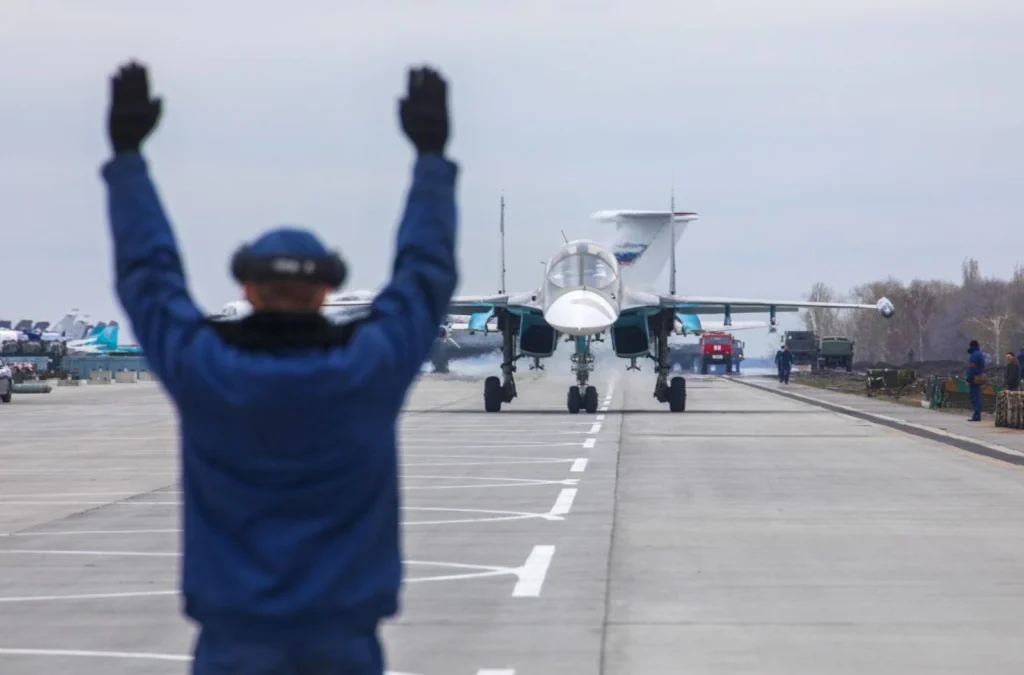During a covert mission in Ukraine, the supersonic fighter bomber Su-34 fired the Russian hypersonic missile “Kinzhal.” State awards were bestowed upon the team responsible for the operation’s successful completion. TASS has reportedly obtained this information from a Russian Ministry of Defence source.
“The Su-34 aircraft used the hypersonic missile ‘Kinzhal’ (Dagger) during a special operation. The first crew that successfully completed such a task was nominated for state awards,” stated a source from the agency.
The 9-S-7760 Kinzhal complex is the most recent addition to Russia’s arsenal of hypersonic aeroballistic missiles. Both the Mig-31K and the Mig-31I can carry Kinzal Missiles. It has been previously reported that “Kinzhal” missiles will be installed on strategic bombers like the Tu-22M3 and fighter-bombers like the Su-34.
“Kinzhal” missile speed exceeds the speed of sound by ten times. The range of the “Kinzhal” missile is over 2,000 km. This hypersonic missile can manoeuvre at all stages of its trajectory, allowing it to overcome all anti-aircraft and anti-missile defence systems. The “Kinzhal” can be equipped with conventional and nuclear warheads, with a warhead mass of approximately 500 kg.
The hypersonic “Kinzhal” complexes were put on experimental combat duty in the Russian Armed Forces in December 2017. The first known use of these missiles in active combat occurred on March 18, 2022, as a component of Russia’s special military operation in Ukraine.
The destruction of five Patriot launchers and a radar post in Ukraine reportedly occurred by Kinzal missiles fired from Russia in May of 2023. Ukraine counterclaimed that the Patriot System intercepted and destroyed a Kinzal Missile during the raid.
The “Kinzhal” missile’s great degree of manoeuvrability and limited radar visibility is one of the primary reasons for its widespread use. Its mission is to eliminate targets on land and in the water.
Kinzal on Su-34
According to military analyst Alexey Leonkov who spoke to RIA Novosti on Monday, arming Su-34 aircraft with “Kinzhal” missiles will enable Russia to enhance the number of targets that may be effectively engaged on distant approaches in all theatres of military operations and any direction.
He explained that this would involve expanding the armament options for the Su-34 but that there would be a clear benefit. It allows for greater flexibility and standardisation in how the task is carried out. Although Russia has only a small number of MiG-31Ks, it has over 200 Su-34s. The number of targets that can be efficiently engaged has grown along with the expansion in the number of ‘Kinzhal’ carriers deployed. He said that Russia is in a position to set up anti-access and area denial zones in all theatres of military operations.

An Anti-Access and Area Denial (A2/AD) zone is purposefully established to discourage an enemy’s advance. It entails producing a threat that will be faced by adversarial troops whenever they enter or operate within that zone.
“The strategy of a potential adversary involves strikes with long-range precision weapons from maritime platforms, primarily targeting our layered air defence systems. Now, we can neutralise those platforms on distant frontlines in all directions,” explained the expert.
Nicknamed Hellduck, the Su-34 is flown by two personnel. The bomber can travel a distance of up to four thousand kilometres and at speeds of up to one and a half thousand km per hour. The aircraft has a combat radius of 1,100 kilometres and a practical ceiling of 17,000 metres. The bomber is outfitted with a 30 mm GSh-301 cannon and twelve hardpoints that may accommodate guided and unguided air-to-air and air-to-surface missiles, cluster bombs, guided bombs, and free-falling bombs. The Su-34 can suspend armaments weighing up to eight tonnes.
In addition to a radius of 1100 kilometres for the Su-34 and a distance of 2,000 kilometres for the Kinzal, the anti-access area that can be established is approximately 2,500 to 3,000 km. One Kinzal missile weighs about 4,300 kg. Hence, the Su-34 can carry both offensive and defence weapons and one Kinzal missile.
The Challenge of Launching Kinzal from Su-34
It is known that the Kinzal missile depends on the speed of the carrier aircraft at the time of launch. The Russians decided to use the MiG-31 type as a carrier for their “Daggers” since it has a maximum flight speed of 3,000 kilometres per hour (km/h) and a stated combat load of up to 9 tonnes. However, the maximum declared flight speed of Su-34 is only up to 1,900 km/h. The Tu-22M3, also a potential carrier of Kinzal, has a maximum speed of 1,997 km/h. The Russian Su-57 stealth fighter plane is also meant to carry Kinzal but in a smaller size. It means that the Su-34 fired Kinzal at a certain awkward angle of attack, which helped Kinzal gain speed, or that the missile’s performance got worse in some way, like travelling slower or not going as far.
IA Regnum reported in July that Vladimir Artyakov, the deputy director of the state corporation Rostec, said that Russian hypersonic Kinzhal missiles are being made in large numbers.
